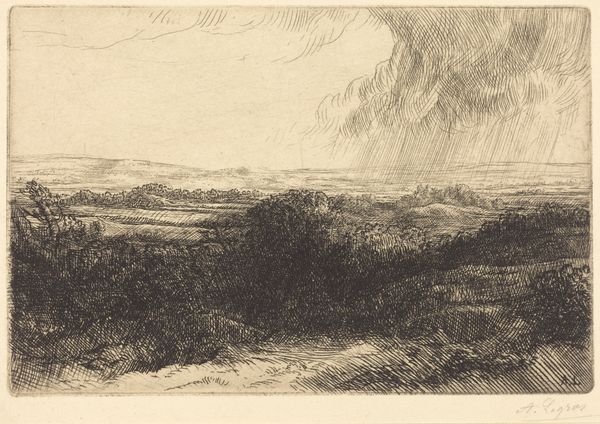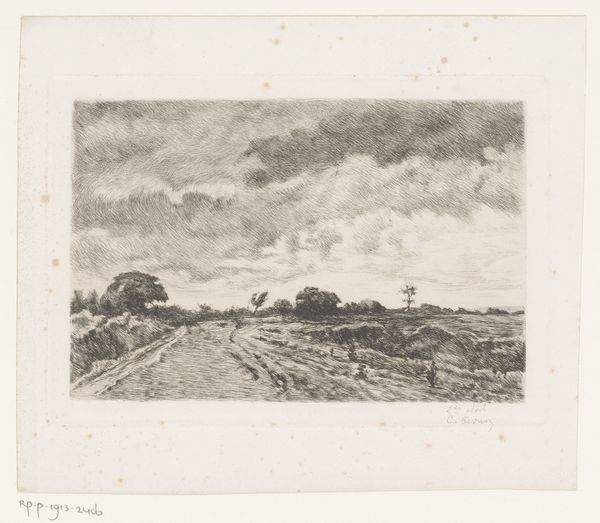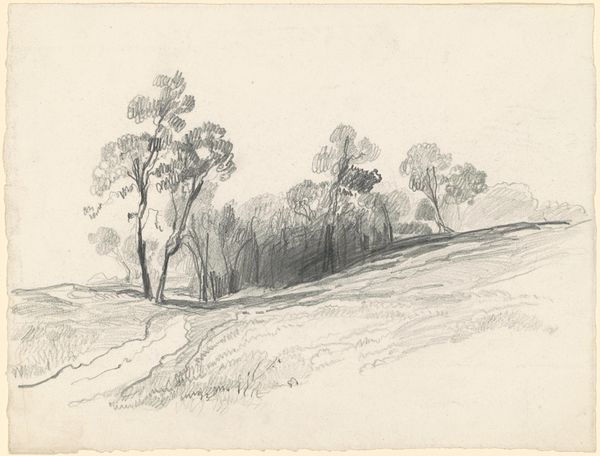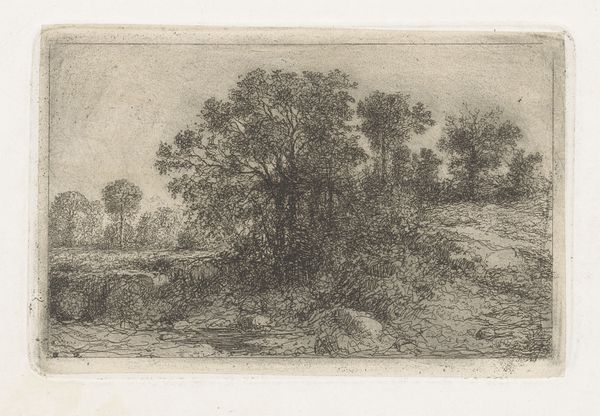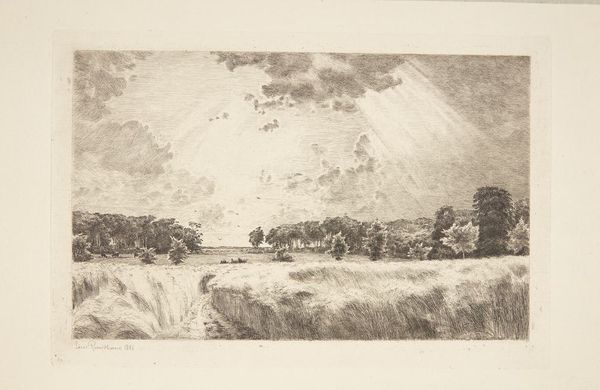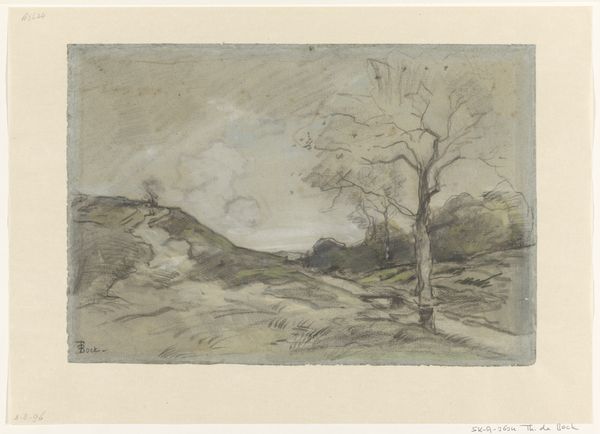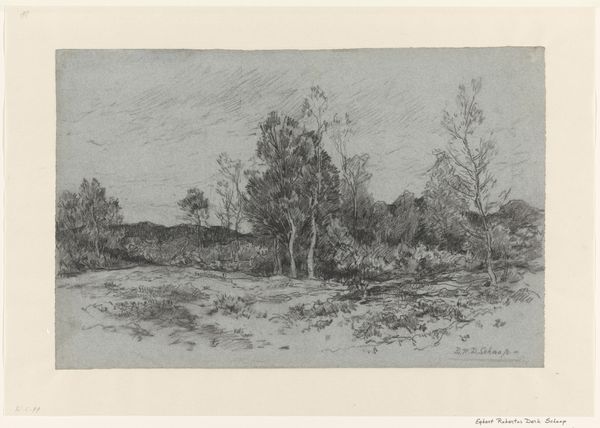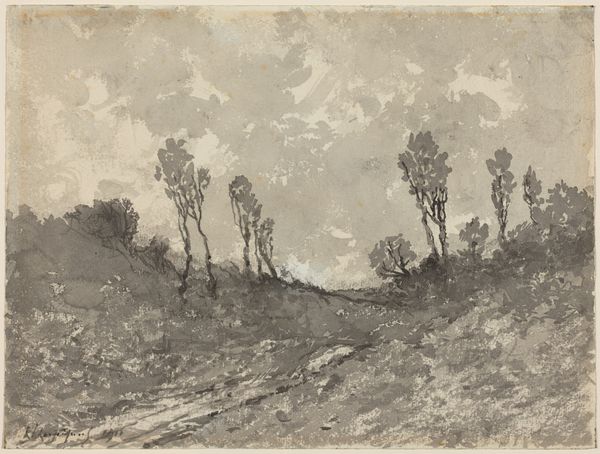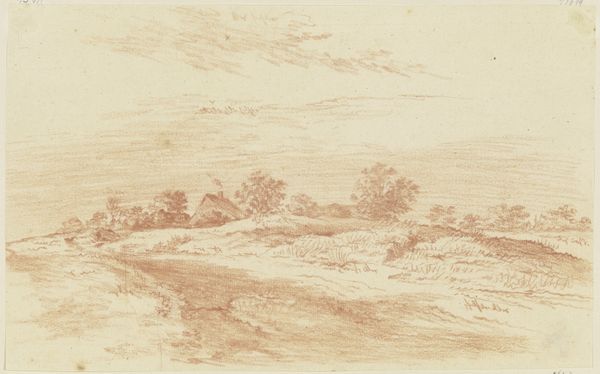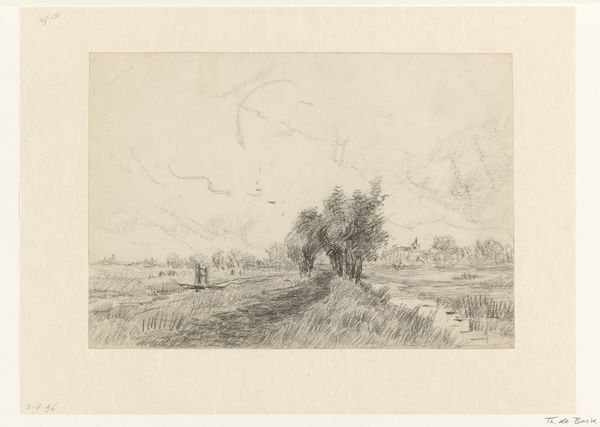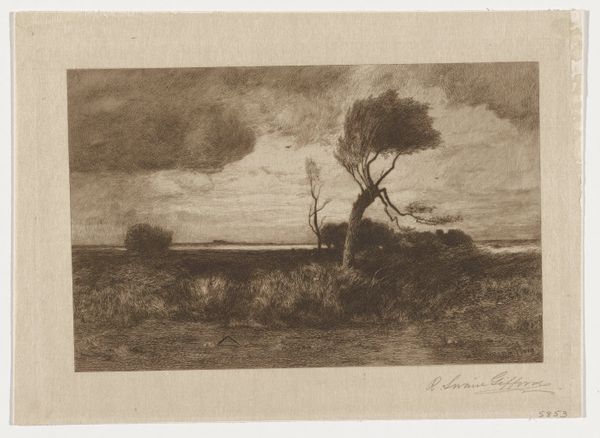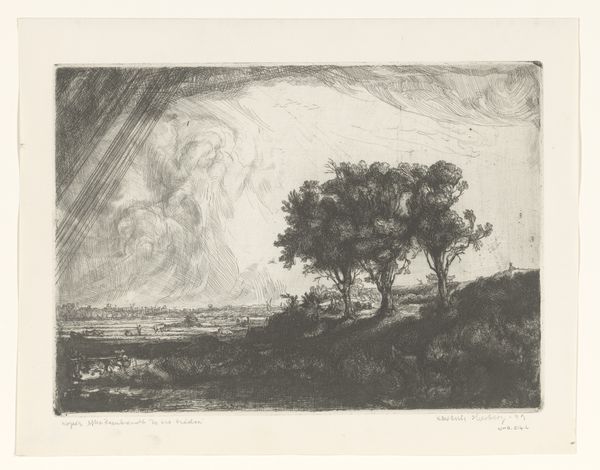
print, etching
#
pencil drawn
# print
#
etching
#
landscape
#
pencil drawing
#
line
#
realism
Dimensions: height 320 mm, width 433 mm
Copyright: Rijks Museum: Open Domain
Editor: Here we have Albert Delstanche's 1936 etching, "Regenbuien boven een weidelandschap met boerin en koe," or "Rain Showers over a Meadow Landscape with Farmer and Cow." It's predominantly grey and evokes a rural, slightly somber mood. What stands out to you in terms of its historical significance? Curator: The seemingly simple rural scene becomes quite complex when viewed through the lens of the 1930s. Delstanche created this work during a period of significant economic hardship, especially in agricultural communities. Consider the role of imagery in times of societal stress. How might a scene like this, showing the enduring nature of rural life, have resonated with audiences? Editor: I suppose it could offer a sense of stability or perhaps even a romanticized view of a life less touched by industrial woes. Did art from this time often depict rural life as a form of social commentary? Curator: Exactly. Images of idealized rural landscapes functioned on several levels. They could serve as an escape, a reminder of simpler times, but also, perhaps subtly, as a critique of industrialization and its effects on traditional ways of life. This print utilizes etching—a relatively accessible medium at the time, potentially reaching a broader public. Does that change your perspective? Editor: It does. Knowing it was accessible changes my thinking about the intended audience and the social impact it might have had. Were there specific political agendas associated with this kind of imagery? Curator: Not necessarily overt agendas, but consider the prevailing ideologies related to nationalism and the glorification of the 'common man', of whom the farmer could be an archetype. The imagery promoted a particular vision of national identity rooted in agrarian values. This artwork enters into a broader discussion around identity and social roles. What did you observe? Editor: Thinking about the socio-political forces at play definitely provides a richer interpretation of what I initially perceived as simply a melancholic landscape. It’s interesting how something so quiet could be so loaded. Curator: Indeed. Examining the cultural context truly brings forth the political meaning embedded within "Regenbuien."
Comments
No comments
Be the first to comment and join the conversation on the ultimate creative platform.

